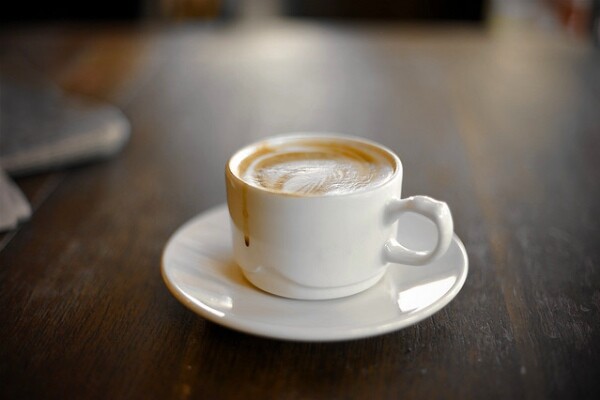Coffee As Health Food

Such is the maddening randomness of the weather in the Northeast that Mark Twain once doled out these words of wisdom: "If you don't like the weather in New England, just wait a few minutes."
That mentality can extend towards how you feel about coffee.
There have been so many studies published about coffee's effects on the human mind and body that there seems to be no real consensus. Sick of caffeine addicts claiming it's good for them? Do a quick Google search and cherry-pick claims about how coffee worsenes hot flashes in menopausal women. Can't get through the day without your steaming hot cup of joe? Seek out the studies claiming coffee is good for your heart. Whatever you're looking for is just a super-specific Google search away.
(The studies have gotten so specific, in fact, that neurotic toddlers in Boston worried they're strange for drinking coffee have gotten into the mix. Apparently, they're not, as 15 percent of them consume at least two ounces of coffee a day. Drink peacefully, you wicked tahdlahs!)
So, why all the chaos?
"Coffee is one of the most heavily researched products in the world today with literally thousands of published studies covering a wide range of health areas," says Roger Cook, a science manager at the Institute for Scientific Information on Coffee. (Yes. There's an entire organization devoted to coffee science.) "The overall weight of evidence is that moderate coffee drinking is perfectly safe."
However, Cook admits that some studies suggest a negative association between coffee and health. But for Cook, those can be explained away through a variety of failures when it comes to how the studies were administered. "[Negative results are] generally when other factors known to impact on an unhealthy lifestyle have not been adequately controlled for," says Cook.
Dr. Rob van Dam, an Assistant Professor in the Department of Nutrition at Harvard, backs up this sentiment. See, one of the problems when it comes to coffee research is that it has been studied for so long the results cannot necessarily be compared with one another. Coffee consumption never happens in a vaccuum, and so when a new factor is found to negatively impact a person's health (say, cigarette smoking), then all the studies that don't take that into consideration have to be tossed into the trash.
"Older studies did report associations of coffee with [a higher risk of heart disease, stroke or cancers]," says van Dam. "But more recent, better-conducted studies that for example control better for smoking and other lifestyle habits that may differ between smokers and non-smokers do not support these older findings."
This isn't to say drinking coffee is as innocuous as drinking water. One of the reasons that studies have such a wide range of results is that there are such a wide range of coffees. No two beans are completely alike.
"Consuming large amounts of French Press or Turkish/Greek coffee that is not filtered and therefore contains the substance cafestol can substantially increase serum LDL-cholesterol concentrations that may increase risk of heart disease," says van Dam. "Other types of coffee such as drip filtered or instant coffee, however, contain very little of this compound."
It also depends on the type of person you are, as well as the stage of life you're in. While higher coffee consumption has been associated with a lower risk of type 2 diabetes, higher caffeine intake during pregnancy has also been linked with a higher risk of pregnancy loss or delivering babies with a low birth weight. So, just what does the USDA suggest officially?
"The newly drafted Dietary Guidelines for Americans mention that 3-5 cups of coffee, as typically consumed in the U.S., is not detrimental for the general population," says von Dam. "For pregnant women, it seems prudent to minimize caffeine intake."
Which is to say: The advice when it comes to drinking coffee seems to be the normal one. Go ahead and drink it, but do so in moderation. Or, if that's not the answer you're looking for, wait a few minutes and a new study will say whatever you want it to say.


